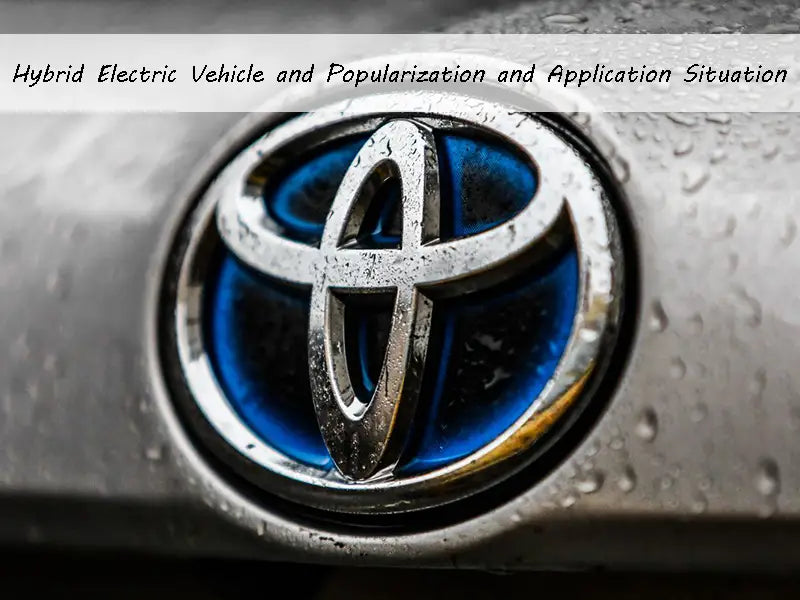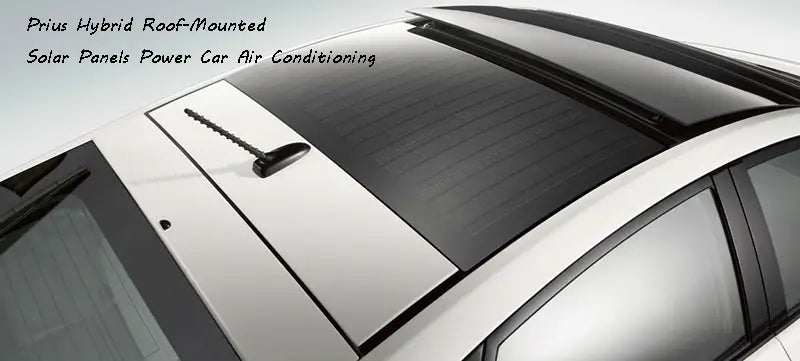
In December 1997, Toyota Corporation's hybrid Prius was launched, the world's first mass-produced hybrid. Since 2000, Toyota Corporation's Prius has expanded into markets such as North America and Europe. In 2003, Toyota Corporation's second-generation Prius went on sale, and since then, Toyota Corporation's minivans, sport utility vehicles and other models have begun to be equipped with hybrid systems. After April 2009, Toyota released hybrid models such as the RX450h, the third-generation Prius, and the Lexus HS250h. Toyota currently sells 10 types of hybrid vehicles in about 50 countries and regions, and three types of hybrid commercial vehicles are also sold domestically.
Toyota Motor Corporation's hybrid vehicles are mostly produced in Japan, but also in the United States and China. Production increased by 25% to 430,000 units in 2007 and is expected to increase to 1 million units in 2010. According to the analysis of Toyota Motor Corporation, in 2008 Toyota has surpassed General Motors Corporation of the United States to become the world's top automaker. Toyota Motor Corp.'s hybrids were launched in Australia and Thailand in early June 2008 in response to rising demand for fuel-efficient vehicles amid high oil prices. Toyota Motor Corporation produced the Toyota Camry Hybrid in Thailand in the second half of 2008 and the Toyota Corporation's Camry Hybrid in Australia in 2010 using an existing production line. Toyota Motor Corporation will increase the number of hybrid vehicles produced at each of these plants to 10,000 in three to four years.
In June 2008, Toyota announced that it would sell its next-generation lithium-ion battery-powered plug-in hybrids in Japan, the United States and Europe in 2010. Most hybrid vehicles, such as the Toyota Prius, use nickel-metal hybrid batteries. Toyota Corporation's joint venture with Panasonic EV Energy has planned to start production of lithium-ion batteries in 2009 and mass production in 2010.
Toyota Motor Corporation announced in July 2008 that it would add solar panels to the roof of the GM Prius hybrid to power the car's air conditioning . As part of the complete model design, the Toyota Corporation's Prius Hybrid will feature roof solar panels in its premium models. Toyota Motor Corp. will overtake General Motors Co. to become the first major automaker to mass-produce vehicles with solar power systems.

Toyota Corporation's total vehicle sales in Europe in 2008 fell 10% from the previous year to 1,119,521, but the company's Lexus hybrid sales rose 18% from the previous year to 57,819, accounting for 5.2% of Toyota Corporation's total sales . Sales of the Toyota Corporation's Prius hybrid in Europe rose 29 percent in 2008 to 41,495 units. The Lexus RX 400h sold 11,923 units in Europe in 2008. Toyota Motor America Sales Corporation stated on March 11, 2009 that the cumulative sales of Toyota and Lexus brand hybrid vehicles in the US market have exceeded 1 million units. Toyota is currently the world leader in the field of hybrid vehicles.
Toyota Motor Corporation announced at the end of May 2009 that it will produce at least about 200 third-generation plug-in Prius hybrid electric vehicles by the end of 2009, and will be equipped with lithium-ion battery stacks in Japan by the end of the year. power. Toyota Motor Corp will sell about 150 plug-in Prius hybrids in the U.S. and more than 150 in Europe, including 100 in France.
According to statistics released by Toyota Motor Corporation on September 4, 2009, as of the end of August 2009, the company's cumulative sales of hybrid vehicles at home and abroad reached 2.017 million. According to the company's calculations, as of the end of August, the total CO2 emissions of hybrid vehicles sold by Toyota at home and abroad were about 11 million tons lower than the CO2 emissions of ordinary vehicles of the same quantity and level.
Japan's Honda Motor Company announced on October 25, 2007 that its low-cost hybrid car will be available in 2009. Save on fuel bills with the Honda Civic Hybrid. The newly launched CR-Z Hybrid Concept is a lightweight design with a hybrid engine. The lower-priced hybrid CR-Z introduced in 2009 is sold in world markets including Japan, the US, Europe and China. Honda said the launch of the new model will boost its global hybrid sales by 10 times from 2006 to 500,000 by 2010. Honda will make the hybrid cost 200,000 yen ($1,800) less than a regular car.

Honda is committed to improving fuel efficiency and reducing CO2 emissions, with a goal of hybrid vehicles accounting for 10% of global vehicle sales by 2010. Honda will sell 200,000 hybrids globally, half of which will be in North America. Hybrids accounted for about 1.5 percent of the company's global vehicle sales in 2006. Reaching the 2010 target of the equivalent of 400,000 vehicles will depend largely on Honda's new hybrids, which were launched in 2009. The new hybrid will be equipped with a newly developed lightweight and compact IMA (Integrated Vehicle Support) system and a more affordable price point. The world sales of such vehicles are about 200,000 units/a.
Honda Motor Company announced at the end of July 2008 that the new 2009 Honda Hybrid drive system can reduce costs by 50% compared to the Civic Hybrid. The key to the lower cost is a reduction in system size and weight, as well as a simplified structure. Honda Motor Company uses the "IMA" (Integrated Auto Assist) hybrid system.
In February 2009, Honda started sales of its new hybrid Insight in Japan. The price of the car is set to start at 1.89 million yen, which is lower than 2 million yen, which fully reflects Honda's philosophy of attaching importance to price. Since Honda's existing "Civic Hybrid" starts at 2,289,000 yen, and Toyota Corporation's Prius starts at 2,331,000 yen, the Insight this time reduces the price by 400,000 yen.
The new Insight has a fuel efficiency of 26km/L in the "JC08 mode" that is close to actual driving. In order to achieve the same level of fuel efficiency as the Civic Hybrid, but also reduce the price, Honda has done everything. Efforts to cut costs. Especially in the hybrid system, the number of components such as the motor and battery pack has been reduced, and the manufacturing capacity has been increased, thereby reducing the cost by 40%.
In addition, at the "Detroit Auto Show" (2009 North American International Auto Show), the largest auto show in North America held from January 11 to 25, 2009, Toyota Motor first exhibited the new Prius, which was launched in May 2009. According to reports, the car has been improved based on the concept of focusing on fuel efficiency. On the basis of the same battery capacity as the existing Prius, the engine displacement has been increased from 1.6L to 1.8L, and the motor output has also been increased from 40kW to 60kW. These improvements are all to improve the actual fuel efficiency.

At the same time, in order to improve the efficiency of the engine, in addition to installing EGR (exhaust gas recirculation) and an exhaust heat recovery system that can exchange heat with cooling water in a short time on the new Prius, Toyota also electrifies the water pump to save the transmission. belt. Although Toyota only announced that the car's fuel efficiency in the Combine mode of City/Highway stipulated by the US EPA is 50mi/gal (about 21km/L), it is also about 10% higher than the existing Prius. The fuel efficiency of the existing Toyota Corporation's Prius in JC08 mode is 29.6km/L. If it is also improved by 10%, the fuel efficiency of the new Prius in this mode is about 32.5km/L. In this way, the difference in fuel efficiency between Toyota Corporation's Prius and Insight is about 6.5km/L.
The price-oriented Insight and the fuel-efficient Toyota Corporation's Prius have fully demonstrated the different concepts and directions of the two companies in the development of hybrid vehicles. Insight plans to sell 200,000 units a year globally, and Toyota Corporation's Prius plans to sell 200,000 units a year in the U.S. (its annual global sales are expected to reach 400,000 units). These two Toyota Corporation's cars will undoubtedly become mainstream bestsellers in the hybrid market.
Read more: Hybrid Electric Vehicles and Their Popularization and Application Situation















